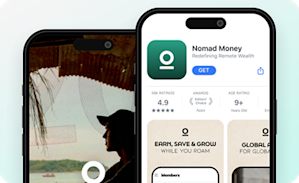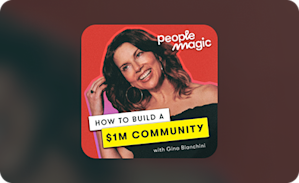Communities & Memberships
Membership Engagement Platforms - Key Features + 7 Options
The right membership engagement platform turns subscribers into a thriving community. This guide shows you how to choose—and compares 7 top picks
Author
Mighty Team
Last Updated
September 17, 2025

The subscription e-commerce market is projected to reach almost $1 trillion by 2026. And a big chunk of this market is what the cool kids call a membership.
A membership is a subscription that gives you something to belong to. It lets members show up and meet people. They learn and grow. And the Host earns recurring revenue.
And most memberships take place on a membership engagement platform.
There’s a ton of membership management software out there. Seriously, a ton. Most of them let you post content, create member packages and charge, and organize your community in some way.
But you know what? None of this matters if your engagement sucks. People pay to belong. They pay for value, transformation, and experiences they can’t find anywhere else. And if your engagement sucks, your churn goes through the roof.
That means you need a membership platform built for engagement. Not passive subscribers. Engaged, raving fans who will grow your membership through word of mouth.
In this article, we’ll share what to look for. We’ll talk about how the right engagement platform can transform your membership into a growth engine–while the wrong one leaves you struggling.
We’ll show you what to look for in software and suggest 7 of the best options on the market.
What Is a Membership Engagement Platform?
A membership engagement platform is software for building relationships with and between a member base: connecting members to you and to one another.
For many member-driven organization, brands, or creator communities, the engagement platform is the space where the magic happens: the conversation, friendships, and transformation that makes it worth belonging to. The top membership engagement platforms have features for building community, teaching, bringing members together live, and tracking memberships on the back end.
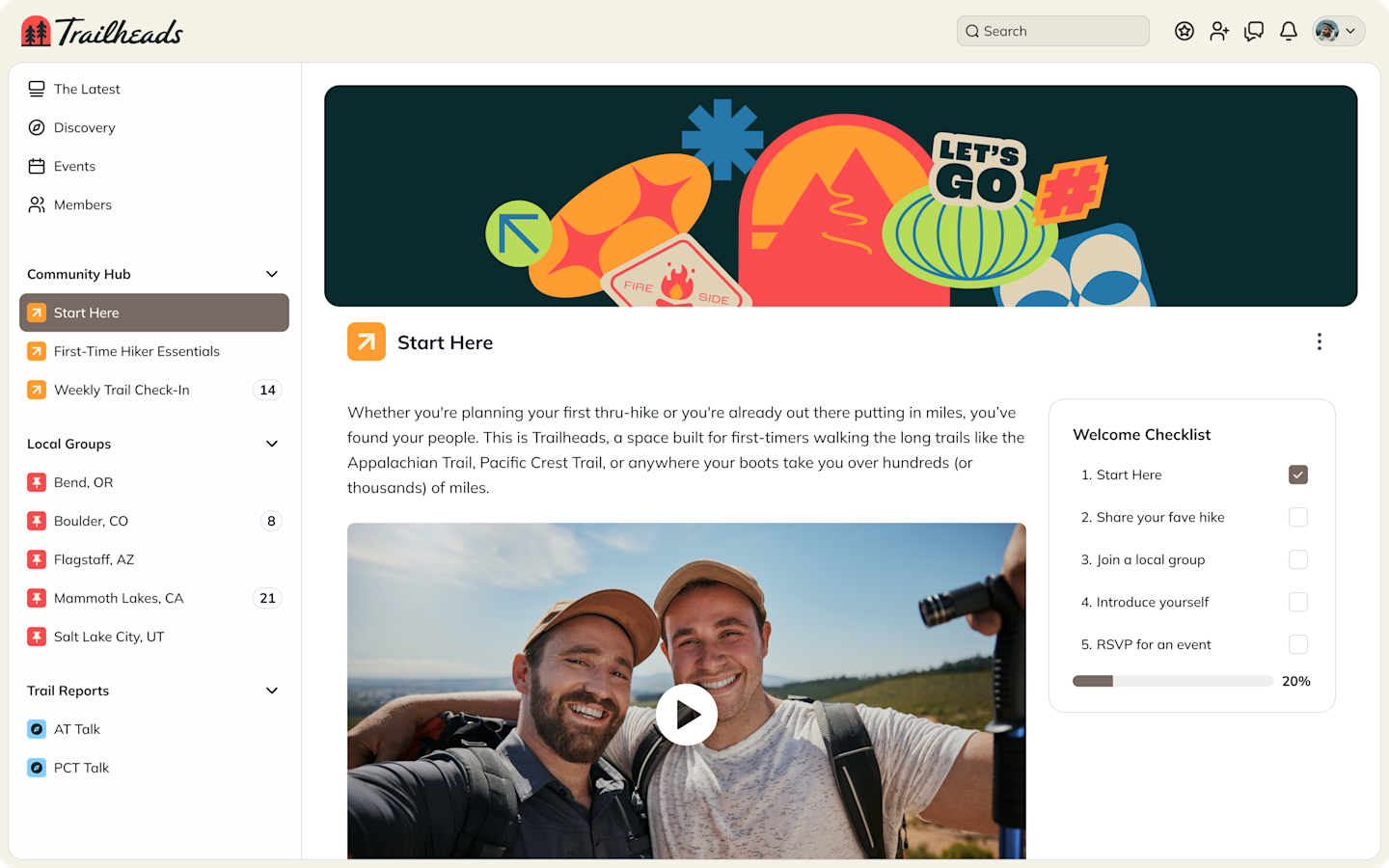
The 7 Best Membership Engagement Platforms: A Comparison Chart
Best Features | Use For | Starting From | |
|---|---|---|---|
G2's #1 Community Platform, AI-Boosted Member Engagement, Branded Apps, Gamification | People-Magic Communities + Courses, Livestreams, & Events | $49/mo | |
White-Label Apps, Discussion Forums, Event Management | White Label Apps with Discussion Forums | $549/mo | |
AI Networking, Job Board Integration, Fundraising Tools, CRM Connections | Alumni Networks & Professional Associations | $8,000/yr | |
Database Management, Website Builder, Member Management | Nonprofit Organizations & Member-Based Groups | $60-$900/mo | |
Clean Design, Discussions, Courses, AI Agent | Communities with Courses & Events | $89/mo | |
Advanced Marketing Funnels, Async Course Creation, Email Marketing | Async Courses w/ Separate Community | $149/mo | |
WordPress Integration, Content Gating, Membership Tiers | Adding Membership to Existing WordPress Sites | $49/mo |
Why Member Engagement Matters
Member engagement matters for a whole bunch of reasons, depending on the goals of your group:
Financial stability: When orgs are driven by membership revenue, engagement keeps members connected AND reminds them of why they value the membership in the first place.
Creates value: Most member relationships aren’t one-dimensional. Members pay to belong, and they often want value in return. Member engagement gives this with education or entertainment.
Builds community: Any membership works best when people gather together. Member engagement connects members to each other, building friendships and communities and reducing churn.
It’s your competitive advantage! As you build a community around your membership, that becomes more and more valuable to members.
Makes operations easier: Doing great engagement simplifies operations. Members will be more likely to ask for help in threads (that other members respond to) or use the self-service options of your software.
Data collection: The underrated community hack is that often doing member engagement on a platform helps you get data about what members love and what they don’t care about.
Key features to look for
Here are some of the main things a membership engagement platform needs.
Member connection tools
Communities don’t grow because a Host pumps out content. Communities grow because members engage with each other and make friends.
Software can help with this, creating opportunities for members to connect and engage. Look for:
Smart member profiles with discovery & searchability.
Cool ways to match people and introduce them.
Ways for new members to onboard and get immersed quickly.
Content & communication tools
Obviously, membership engagement platforms should have a content engine–both for Hosts and members (AKA user-generated content) to create and post content. Look for:
Discussion forums, chat, & messaging
Livestreaming with chats, backstage, etc.
Event hosting, landing pages, and RSVPs
Email automations and integrations
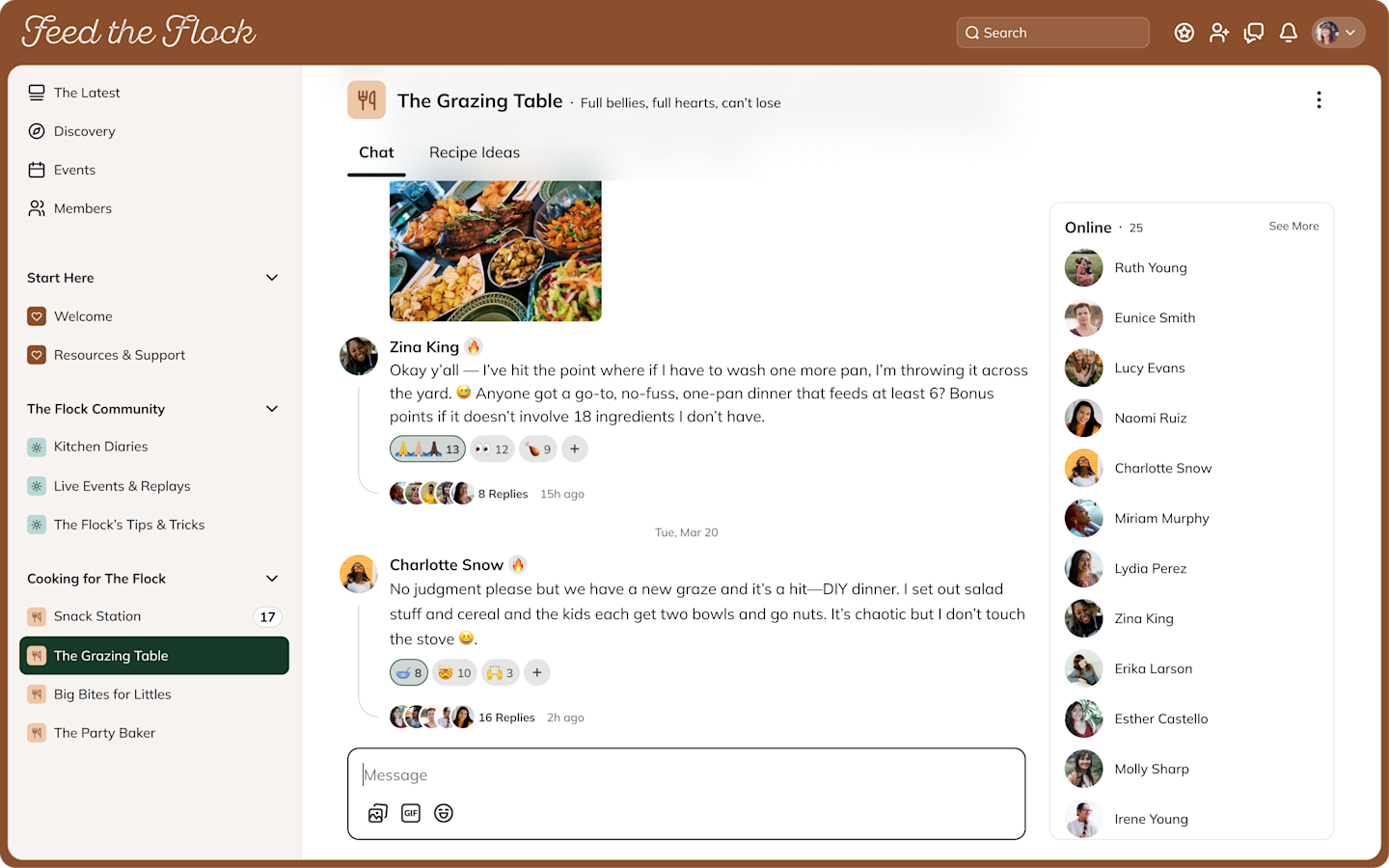
Engagement tools
On top of connection, how do you get members to engage? Software isn’t the only way, but it can help. Here are some of the membership engagement tools top platforms offer:
AI-engagement features like…
Challenges, gamification, and unlocks
Journeys and new members sequences
Scoring and activity tracking
Retention metrics and easy ways to re-engage members
Monetization & business tools
A membership is usually a business–and a strategy for monetization. Sometimes, the business case doesn’t depend on the platform. For example, a national nonprofit might offer a free platform as a bonus to its members.
However, often memberships are built for paying members and the platform is part of the business. Here are some monetization tools to look for:
Payment processing, bundle building, and flexible payment options (e.g. multi-currency)
Landing and checkout pages
Content gating and access controls
The option to sell other things: (e.g. courses or events)
Apps for every device
Community analytics that provide insights into your members’ habits & interests
Design & customization tools
Finally, can you build your membership under your own brand? It matters. Branding is part of engagement too, creating a sleek and custom membership feel. Look for:
Community branding & styling, light & dark modes, etc.
Customizable pages, landing pages, etc.
Email and communications customization
Branded mobile and web apps (deployment under your brand)
Custom URLs, forms, and advanced CSS
Best Membership Engagement Platforms
1. Mighty Networks
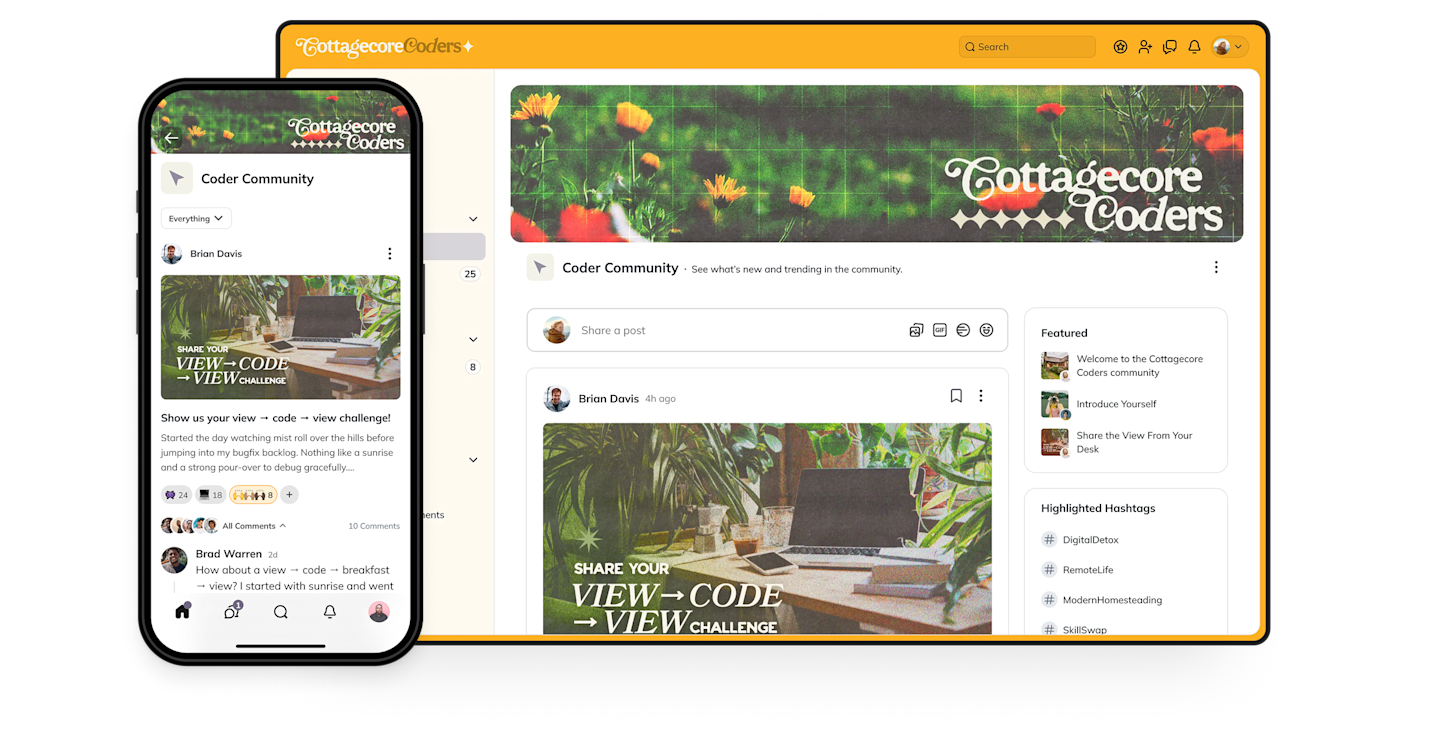
Price: From $49/mo
Why it works: G2’s top-rated community platform designed for engagement with AI-boosted community building, member connecting, automations, gamification, and total customization for max engagement. All available on a branded app.
Overview
Mighty is built for people-first engagement, with tools for member profile building, people exploring, and one-click connections. Automate conversation starters between members or community wide, use AI to spark or improve writing, or re-engage lapsed members with one click. This is people magic, and there’s nothing else like it.
Mighty’s engagement tools live on the most flexible content platform you’ll find anywhere. Build your community with Spaces that can be customized to fit anything you want to serve up: Discussions, People Explorer, Featured Hashtags, Courses, Virtual Events, Chats, or Livestreams–plus any kind of written or video content you want to add.
Add to this gamification, curated member experiences, leaderboards, and automations that make community engagement roll.
Finally, branded apps bring everything in your membership to YOUR app in the App Store or Google Play Store. And you’ll work with a team that’s launched more than 400 apps with proactive submissions, support, and design help.
On Mighty, you can bundle any features in a membership, sell in 135 different currencies, starting from a flat fee of $49/mo (with transparent pricing).
Pros
G2’s top-rated community platform
AI-boosted member engagement tools
Add in live or pre-recorded courses
Host livestreams and virtual events (w/ RSVPs)
Lots of customization and branded apps
Cons
It’s a paid software
2. Disciple
Price: From $549/mo + setup fees
Why it works: Disciple offers white-label branded apps as its core membership feature, with discussion forums built-in.
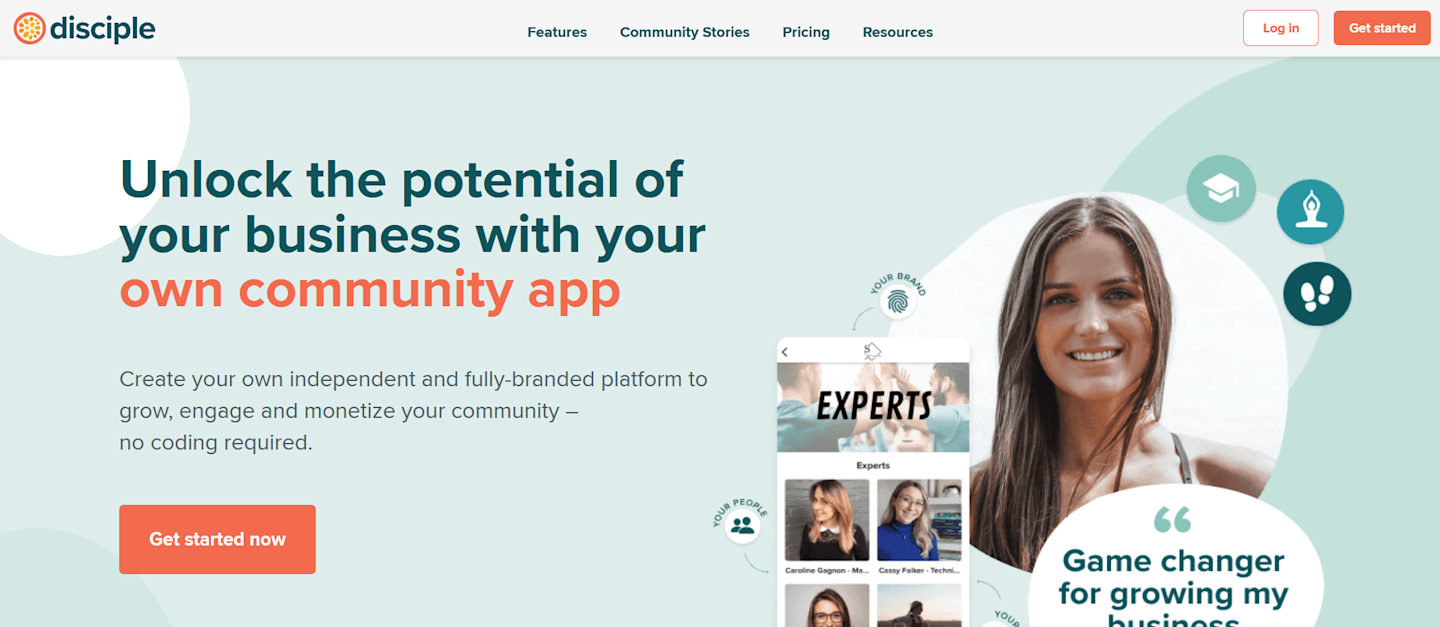
Overview
Disciple offers threaded discussion forums on branded apps for iOS and Android. Customers can also get a membership on a web app, but it has a slightly different UX. Discussion forums support images, video, and text posts. And member profiles let members find each other and start a conversation.
Disciple also offers some event managing tools, like integrated livestreaming and RSVPs. And it has a basic course builder for including learning material with a membership, as well as a progress tracker.
Finally, Disciple has different ways to notify members, like push notifications for mobile and email.
Pros
Premium white-label apps for all devices
Lots of customization options across the platform
Flexible content options
Enterprise-level security features and data protection
Cons
Limited built-in engagement features, especially for the price
Users report different UX between the apps and web app
Less innovative than competitors
3. Hivebrite
Price: From $8,000/year
Why it works: An alumni forum engagement platform built with networking and fundraising in mind.

Overview
Hivebrite’s main features are its member directory, built around searchable profiles with professional interests. This includes a job board integration, which is a useful feature–especially for alumni networks. They have also included an AI networking feature.
Another unique feature is Hivebrite’s fundraising that allows campaign creation, donor relationships, and management. It also easily integrates with different CRMs like Salesforce and HubSpot. Finally, it has the option to add regional chapters for associations or alumni groups with local subgroups.
Otherwise, Hivebrite’s features are in line with a discussion forum software. It has topic-based conversations with tagging. It has an event management tool–which works well for scheduling and hosting an in-person event. But it isn’t strong for virtual events. It lacks native livestreaming. And it’s also missing courses. Finally, the UX and design feels dated.
Pros
Cool networking tools designed with alumni in mind
Built-in fundraising & CRM connections
Analytics and reporting
Cons
It’s missing key features for certain memberships (e.g. courses & livestreaming)
Outdated UX
Price point is high for many memberships
4. Wild Apricot
Price: $60-$900/mo depending on member count
Why it works: Good database management with a website builder built in.

OverviewWild Apricot’s strongest tool is its database and member management features, with a lot of back-end tools for managing a member-based organization. Like others on this list, it also handles payment processing, dues, fees, or donations with recurring billing, adding in features like automated renewal notices.
Wild Apricot also has the power to build membership websites, with drag-and-drop creator and some templates to work with. And it has some event management tools that can be used to run a live event: registration, scheduling, wait lists, etc. Finally, it has good reporting tools.
But Wild Apricot isn’t actually as strong at the member-facing features that grow engagement. It offers forum discussions on the platform, as well as member portals for gated content, documents, and access to a member directory. It’s missing advanced connection and content tools: no courses or livestreaming.
Wild Apricot’s app is also event-focused. It’s made for using during an in-person event, with features like scheduling badges, and member connections. It’s not built for virtual member engagement.
Pros
Thoughtful design for running the back-end of a nonprofit
Good member management and database tools
Integrated website builder
Cons
The member-facing features aren’t strong–simple member directories and basic forums
Outdated design and UX
The app is primarily for events
Need a second member management app for admin
5. Circle
Price: From $89/mo
Why it works: Clean community design that’s intuitive to use. Spaces can be built around events, courses, or community.

OverviewCircle has some good membership engagement features. Its software centers on Spaces that can hold one of three features, either for a discussion forum, a course, or a virtual event.
It offers the option to toggle on simple member profiles that are searchable. And the LMS is simple but works for teaching pre-recorded video courses. You could also teach a live course with Circle’s livestreaming tool. Circle was initially created to be a course add-on for Teachable, so it could also be a good choice for a course creator adding a community to their Teachable course.
Circle has good apps for every device. And it has a simple email marketing tool built into the platform, as well as an AI Agent for members to access a knowledge base.
Circle is comparable to Mighty Networks as a community platform, with a few key exceptions. Circle doesn’t have the advanced membership engagement tools Mighty has added. It’s missing things like new member sequences, AI on-boarding, AI profile assist, and AI-boosted member intros–all features Mighty has. And Mighty’s Spaces are flexible, you can put any feature in the same Space, while on Circle a Space can only hold one (for example, an event and course need to be in separate spaces).
Pros
Simple, clean design and good content tools
Integration with teachable.
Easy to divide content into Spaces
Basic integrated email
Cons
Limited features for discovering and connecting with other members
Spaces are limited by features
Lots of hidden fees for additional admin and features
6. Kajabi
Price: From $149/mo
Why it works: Kajabi has advanced course marketing and funnel tools for selling courses, and a linked platform for memberships.
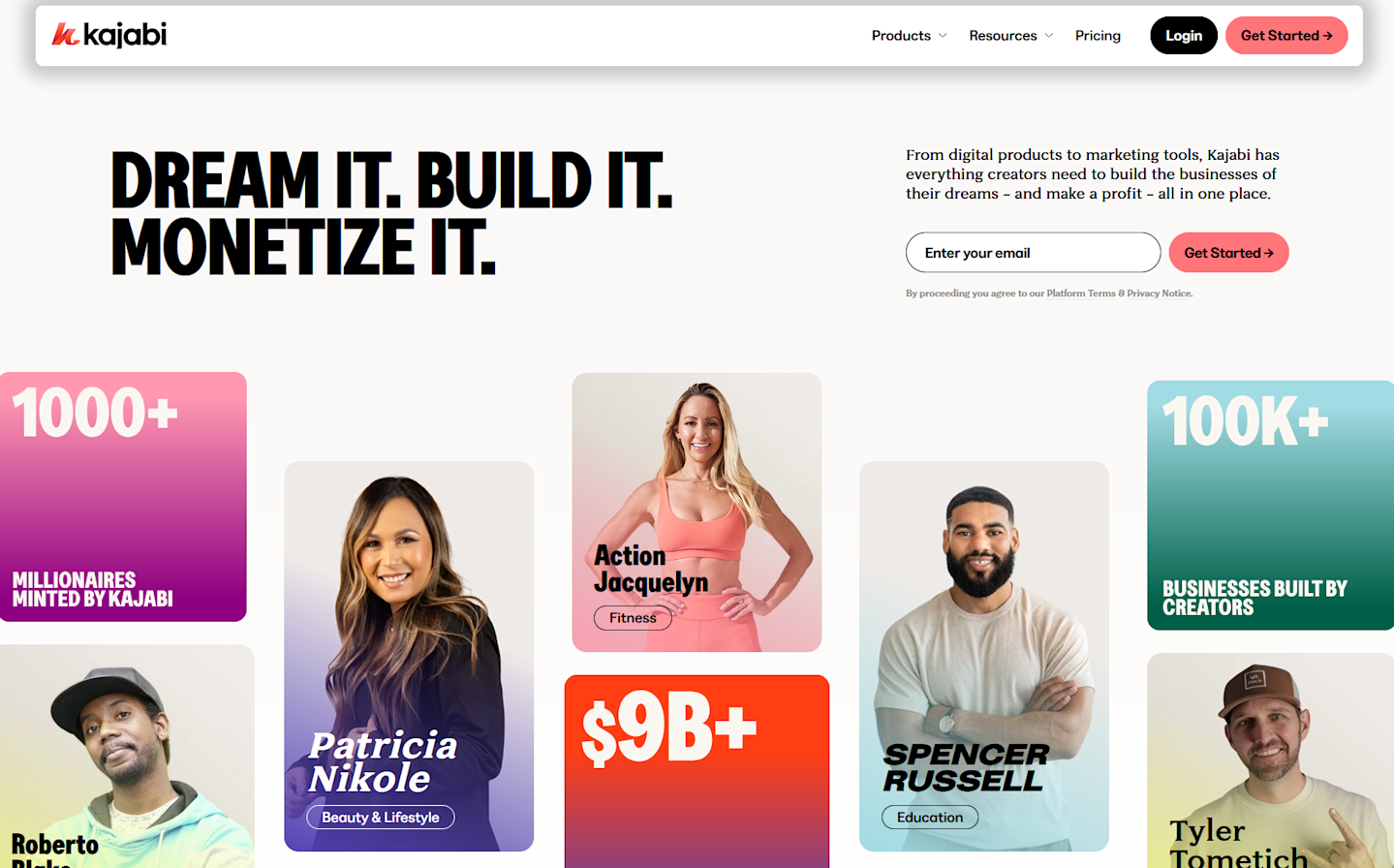
OverviewKajabi is best known as a course-building platform, specializing in asynchronous courses (AKA pre-recorded). It has a good site builder for course websites, with lots of customization tools as well as templates to work from. And Kajabi is best known for its suite of course marketing tools built into the platform. This includes things like pre-made funnels for selling different kinds of products, landing pages that connect well to the funnels, and flexible checkout pages with integrated up-sells, down-sells, cart recovery, etc. And it includes an email marketing tool that connects all this together and supports the digital business. All told, Kajabi is a good spot to sell pre-recorded courses.
Using Kajabi as a membership engagement platform can work, but there’s a few things to understand. Kajabi’s initial product didn’t have a great forum feature. Kajabi knew this, and acquired a company called Vibely to make up for it. The result? Kajabi now offers communities, live meetings, and livestreaming, all features it was missing before. For the most part, these work well and are intuitive–once you’re on the old Vibely platform.
The problem is that these don’t integrate well with Kajabi’s main platform. The appeal of Kajabi is selling courses. But for Kajabi Community 2.0, members need to download a second app, use a second logon on a second platform. The result is that the member experience is a bit disjointed. This takes away from Kajabi’s effectiveness as a membership engagement platform.
Pros
Excellent marketing automations and sales funnels
Good tools for course creation and page building
Integrated email marketing
Cons
The membership tools feel like a separate product.
Need 2 different apps and logons to run courses and memberships together
It’s missing any advanced membership engagement tools (e.g. gamification, AI conversation starters, etc.).
7. Memberful
Price: From $49/mo
Why it works: If you’re already running a WordPress website, Memberful can be used to add a membership to it.

OverviewMemberful is a WordPress plugin that can be used to add a membership component to an existing WordPress site. It does this by adding gated content, restricting access to certain posts, pages, and content. It also adds in (very) simple discussion forums.
Memberful can integrate with Stripe for payment processing. And it lets you add membership subscription tiers and track analytics. An email integration means you can add automated welcome sequences and updates.
In terms of membership engagement, the fact that Memberful is a WordPress plugin hurts it. It’s just challenging to get the level of features you can get in a dedicated membership platform. And Memberful doesn’t have a native app.
Pros
Excellent WordPress integration for adding membership to an existing site
Integrated payment processing, content gating, and membership tiers
Cons
As a WordPress plugin, it has very limited membership engagement features.
Even the discussion forums are incredibly basic.
No native mobile apps
Conclusion
Member engagement doesn’t just happen by accident! Each of the membership engagement platforms above offers something unique for connecting and “wowing” members, showing that software can be an important tool for member engagement.
And if you want unmatched engagement, come try Mighty Networks! G2’s top-ranked community platform has incredible membership features designed to offer more engagement than any other platform, things like AI conversation starters, rich member profiles and people explorer, automated welcome sequences, and gamification! Plus it has the flexibility to build any type of content or offer you can imagine, and deploy under your brand–even on a branded app.
You can try it free for 14 days–no credit card required.
FAQs
What’s the difference between a membership platform and a membership engagement platform?
It’s subtle. A membership platform has the tools you need to run a membership. But these could be back-end functions, like databases, member lists, or admin tools. In contrast, a membership engagement platform is built to be member facing, and to get members connected to each other. For example, consider features like livestreaming, automatic introductions, or icebreakers.
How can I tell if members will actually engage?
Think about your membership. You can even create a Big Purpose statement for the community you envision. What software or tools do you need to deliver that big purpose and create an amazing experience?
Having a membership that’s designed with a Big Purpose and an Ideal Member in mind boosts the chances it will be a success. Then you can focus on software that helps you deliver those things, instead of being limited by your software. For example, if you say, “Hey, I think my membership would benefit from getting to meet each other,” you need software to make that happen. That’s the sort of thing to watch for.
You can also consider using the basics of Community Design™, which is more likely to make you successful.
What membership engagement features are worth paying extra for?
It’s a good question. And it depends on your membership. For example, a premium branded app will boost engagement, adding custom design, branded notifications, and your organization’s app in the App Store and Google Play Store. But it also costs a premium. You need to figure out if that’s worth it for you.
Here are a few things that can be worth paying extra for:
More customization and branding tools
Integrated courses or events (if your platform offers them)
Advanced marketing or email integrations or capabilities
SSO and owned domain names
Automations
Branded apps
Should I migrate my community for better membership engagement?
Maybe! But you should make sure it’s actually the software holding you back. Often, the problems we see in membership engagement aren’t just about software. Communities that lack a clear Big Purpose, Ideal Member, or Year in the Life will often see poor engagement. Try working through this series to make sure your membership is designed properly.
However, if you are finding that you can’t do the things you want to do with your members, you might consider a new platform. Maybe you want to run virtual events, but your platform doesn’t offer native tools to do that. Maybe you want to teach a course. Maybe your platform doesn’t offer an app–a surefire way to kill membership engagement. These might be reasons to move platforms
Ready to start building your community?
Start a free 14-day trial to explore Mighty—no credit card required.
More like this
Join Mighty Community
Learn the principles of Community Design™ (and see them in action) alongside thousands of creators and entrepreneurs. It's free to join!

Communities & Memberships
Community Platforms
Managing a Community
Building a Community
Growing a Community
Monetizing a Community
Content Creation
Online Courses
Creating a Course
Teaching a Course
Course Platforms
Selling a Course
Creators & Entrepreneurs
Monetization
Content Creation
Starting a Business
Website Builders
Creating & Managing a Website
Events
Event Platforms
Hosting & Marketing Events
Branded Apps
Creating a Mobile App
Coaching Apps
Community Apps
Coaching
Mastermind Groups
Starting a Coaching Business
Coaching Platforms
Filter by Category
Communities & Memberships
Online Courses
Creators & Entrepreneurs
Events
Branded Apps
Coaching
Build a $1 Million Community
This free masterclass went viral—sign up to learn why.


